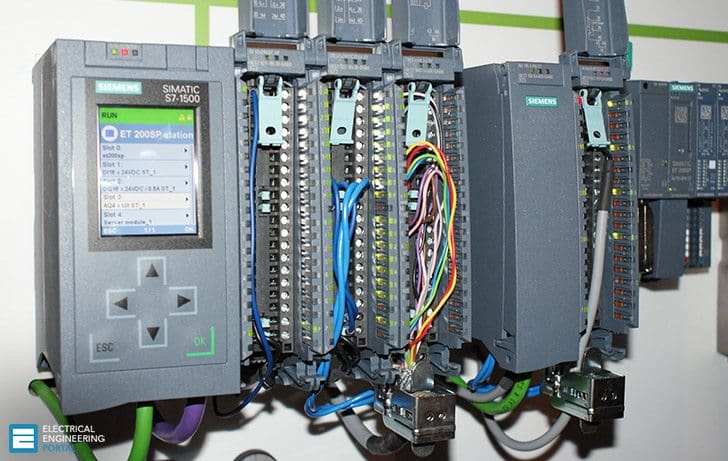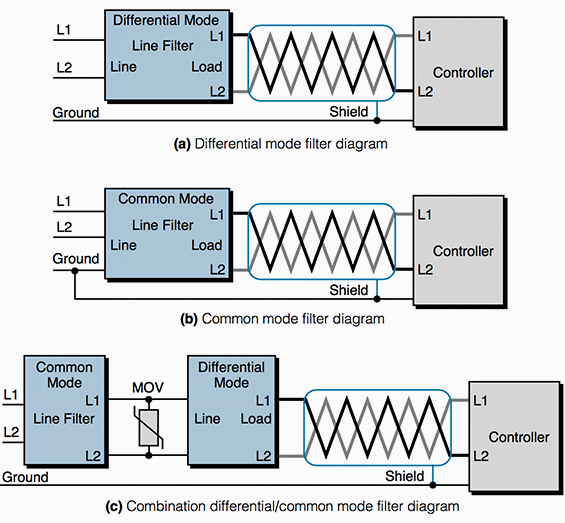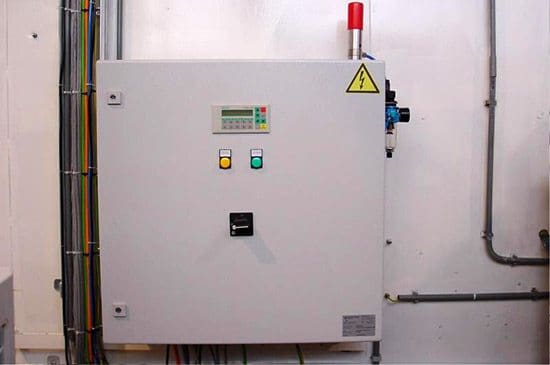
PLC in adverse conditions
In certain applications, the operating environment may have extreme conditions that require special attention or otherwise can seriously damage PLCs. These adverse conditions include excessive noise and heat and nuisance line fluctuations. This article describes these conditions and provide measures to minimize their effects.
- Excessive noise
- Excessive heat
- Nuisance line fluctuations
1. Excessive Noise
Electrical noise seldom damages PLC components, unless extremely high energy or high voltage levels are present. However, temporary malfunctions due to noise can result in hazardous machine operation in certain applications. Noise may be present only at certain times, or it may appear at widespread intervals. In some cases, it may exist continuously.
The first case is the most difficult to isolate and correct.
Noise usually enters a system through input, output, and power supply lines. Noise may also be coupled into these lines electrostatically through the capacitance between them and the noise signal carrier lines.
The presence of high-voltage or long, closely spaced conductors generally produces this effect. The coupling of magnetic fields can also occur when control lines are located close to lines carrying large currents.
Devices that are potential noise generators include relays, solenoids, motors, and motor starters, especially when operated by hard contacts, such as push buttons and selector switches.

Analog I/O and transmitters are very susceptible to noise from electromechanical sources, causing jumps in counts during the reading of analog data. Therefore, motor starters, transformers, and other electromechanical devices should be kept away from analog signals, interfaces, and transmitters.
Although the design of solid-state controls provides a reasonable amount of noise immunity, the designer must still take special precautions to minimize noise, especially when the anticipated noise signal has characteristics similar to the desired control input signals.
IMPORTANT // To increase the operating noise margin, the controller must be installed away from noise-generating devices, such as large AC motors and high-frequency welding machines. Also, all inductive loads must be suppressed. Three-phase motor leads should be grouped together and routed separately from low-level signal leads.
Sometimes, if the noise level situation is critical, all three-phase motor leads must be suppressed (see Figure 1 above). Figure 2 illustrates line-filtering configurations used for removing input power noise to a controller or transmitter.

Note 1 Keep line filters 12 inches or less from the controller. Minimize the line distance where noise can be introduced into the controller.
Note 2 To prevent ground loops, do not tie the common mode line metal case filters with other metal that is at ground potential. Doing so will reduce the filters’ effectiveness.
2. Excessive Heat
Programmable logic controllers can withstand temperatures ranging from 0 to 60°C. They are normally cooled by convection, meaning that a vertical column of air, drawn in an upward direction over the surface of the components, cools the PLC. To keep the temperature within limits, the cooling air at the base of the system must not exceed 60°C.
The PLC components must be properly spaced when they are installed to avoid excess heat.
The manufacturer can provide spacing recommendations, which are based on typical conditions for most PLC applications. Typical conditions are as follows:
- 60% of the inputs are ON at any one time
- 30% of the outputs are ON at any one time
- the current supplied by all of the modules combined meets manufacturer-provided specifications
- the air temperature is around 40°C
Situations in which most of the I/O are ON at the same time and the air temperature is higher than 40°C are not typical. In these situations, spacing between components must be larger to provide better convection cooling.

If equipment inside or outside of the enclosure generates substantial amounts of heat and the I/O system is ON continuously, the enclosure should contain a fan that will reduce hot spots near the PLC system by providing good air circulation. The air being brought in by the fan should first pass through a filter to prevent dirt or other contaminants from entering the enclosure.
Dust obstructs the components’ heat dissipation capacity, as well as harms heat sinks when thermal conductivity to the surrounding air is lowered. In cases of extreme heat, the enclosure should be fitted with an air-conditioning unit or cooling control system that utilizes compressed air (see Figures 3 and 4).
Leaving enclosure doors open to cool off the system is not a good practice, since this allows conductive dust to enter the system.

There are methods available to calculate the temperature rise and heat dissipation requirements of an enclosure based on its size and equipment contents. Temperature rise is the temperature difference between the air inside an enclosure and the outside air temperature (ambient air temperature).
3.Excessive Line Voltage Variation
The power supply section of a PLC system can sustain line fluctuations and still allow the system to function within its operating margin. As long as the incoming voltage is adequate, the power supply provides all the logic voltages necessary to support the processor, memory, and I/O.
However, if the voltage drops below the minimum acceptable level, the power supply will alert the processor, which will then execute a system shutdown.
In applications that are subject to “soft” AC lines and unusual line variations, the first step towards a solution is to correct any possible feeder problem in the distribution system. If this correction does not solve the problem, then a constant voltage transformer can be used to prevent the system from shutting down too often (see Figure 5 below).

Constant voltage transformer //
The constant voltage transformer stabilizes the input voltage to the power supply and input field devices by compensating for voltage changes at the primary to maintain a steady voltage in the secondary.
When using a constant voltage transformer, the user should check that its power rating is sufficient to supply the input devices and the power supply.
Also, the user should connect the output devices in front of the constant voltage transformer, rather than behind it, so that the transformer is not providing power to the outputs. This arrangement will lessen the load supported by the transformer, allowing a smaller transformer to be used. The manufacturer can provide information regarding power rating requirements.
No comments:
Post a Comment